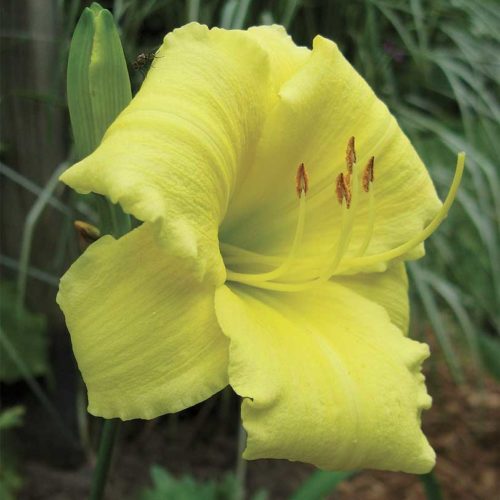
Best Fragrant Perennials – Northern Plains
Name: Comptonia peregrina
USDA Hardiness Zones: 2 to 6
Size: 24 to 30 inches tall and wide
Conditions: Full sun; poor, dry, rocky soil
This medium-size plant is not a member of the fern family, though its heavily serrated leaves with rounded lobes do give it a fernlike appearance. Plant it near a patio or deck to enjoy its spicy, musky fragrance when leaves are brushed against or stirred by a gentle breeze. New lighter-colored foliage provides an attractive contrast to the older, deep green leaves, which become beautifully burnished in autumn. Sweet fern thrives in hot, dry locations, such as slopes and rockeries. Its rhizomatous nature makes it useful for erosion control, and its ability to fix nitrogen allows it to grow in poor soils where other plants cannot.
Name: Paeonia ‘Festiva Maxima’
Zones: 3 to 8
Size: 24 to 28 inches tall and wide
Conditions: Full sun to partial shade; fertile, well-drained soil
Peonies are too often overlooked in new landscapes. I love ‘Festiva Maxima’ placed close to a front door or deck, outside a bedroom window, or in any spot that showcases its prolific blooms. Each double, true white flower is uniquely flecked with pale to deep pink markings. New stalks are red, turning green as they mature; in fall, the large, three-lobed, glossy leaves will gradually turn a deep wine color. Although the blooms are approximately 4 to 6 inches in diameter, the sturdy stems need only a little help from support rings. ‘Festiva Maxima’ blooms continuously from late spring to midsummer, with a sweet fragrance that is pleasant and not at all cloying.
Name: Monarda ‘Fireball’
Zones: 3 to 8
Size: 18 to 22 inches tall and 8 to 18 inches wide
Conditions: Full sun to partial shade; average to wet soil
Bee balm is aromatic from stem to flower and all parts in between. Its common name refers to its historical use as a balm for bee stings. The fireworklike, rich scarlet flowers are highly attractive to bees, butterflies, and hummingbirds. ‘Fireball’ is a fantastic perennial for the middle or back of a border, said to be more mildew resistant than other bee-balm varieties. New growth can often be found at the periphery of last year’s crown, so be sure to allow for a slightly larger growing area. Plant it with Shasta daisies (Leucanthemum × superbum cvs., Zones 5–8) and bronze tufted hair grass (Deschampsia caespitosa, Zones 4–9) for an easy and unusual textural combination.
Name: Hemerocallis ‘Fragrant Treasure’
Zones: 3 to 8
Size: 14 to 22 inches tall and 12 to 14 inches wide
Conditions: Full sun to partial shade; moist to dry soil
‘Fragrant Treasure’ is a ruffled, pale yellow daylily that blooms continuously from June through mid-September. Its light, sweet fragrance makes it an appealing alternative to the ubiquitous ‘Stella de Oro’ (Hemerocallis ‘Stella de Oro’, Zones 3–10). It is tidy, clump-forming, and easy to maintain. ‘Fragrant Treasure’ is lovely planted en masse with roses and chocolate-foliaged shrubbery, such as Little Devil™ ninebark (Physocarpus opulifolius ‘Donna May’, Zones 3–7). For a modern twist, try it with tall ornamental grasses; their fine-textured foliage will act as a foil to this daylily’s strappy, dark green leaves, which turn an attractive yellow in fall.





















Comments
Log in or create an account to post a comment.
Sign up Log in